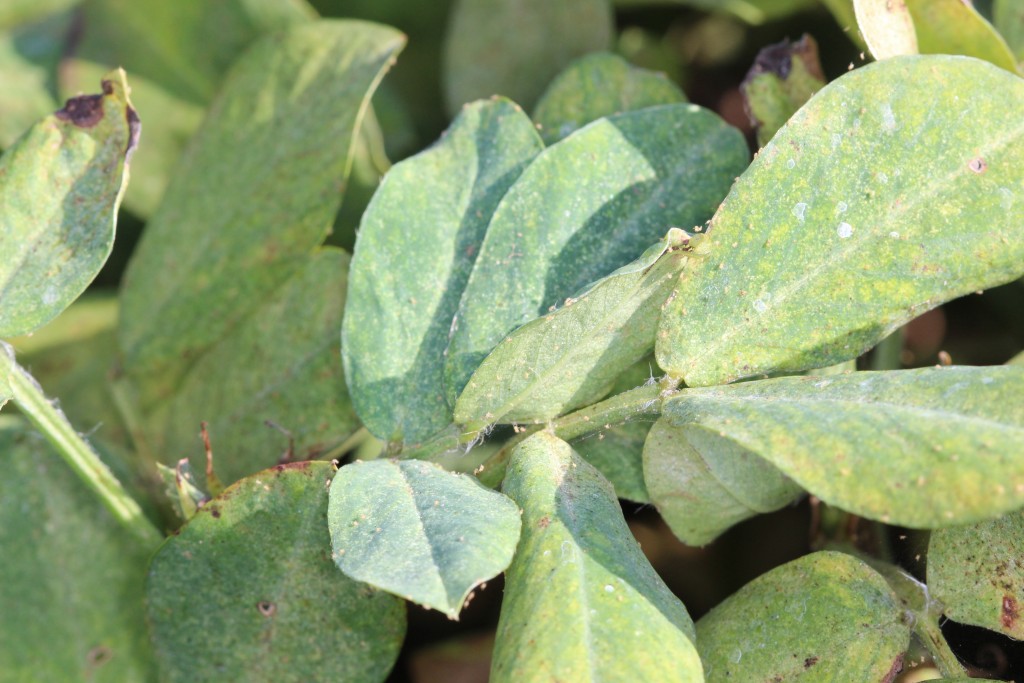The last ten days have brought several calls from agents and consultants about spider mites showing up in peanut. It is not uncommon to see mites in peanut fields this time of year, and it would not be uncommon for low level mite infestations to fizzle out on their own. My advice last week was to watch mites closely and consider treating if the mites appear to be spreading. After a week of warm dry weather in many areas, mite populations are growing rapidly, and I am becoming more aggressive in my approach. I have seen several fields where mite numbers are now high enough that achieving control with a miticide will be difficult to impossible. The only true miticide registered for use in peanut is Comite (Comite II). This product should be applied in at least 20 gallons of water per acre. Comite is a contact material, so good coverage is essential. A second application may be needed to achieve acceptable control. Spot spraying is an option when infestations are getting started, but I have gotten mixed reports from growers who have tried spot spraying. Remember that we should avoid using pyrethroids in fields where spider mites are present, as these insecticides often make mite problems worse.
A period of extended rainfall like that associated with a tropical storm would be expected to reduce mite populations. Low level infestations could be eliminated under these conditions. High populations can be reduced with rainfall, but if hot, dry conditions return we should watch for mites to rebound in these areas.
Garden fleahoppers (GFH) are not common pests in row crops, but we are seeing them in cotton and peanut fields this year. How many GFHs does it take to warrant an insecticide application in peanut? No one really knows, but it is probably a lot. The damage appears as a stippling of the leaves with brown tar-like spots on the underside of leaves. We are watching some infestations to see how they progress, and we will pass along any new information as it becomes available.
